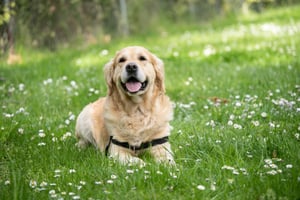Are you struggling to control your Great Dane puppy’s biting? Great Dane puppies are known for...
How to Get Your Puppy to Walk on a Leash
Getting your puppy to walk on a leash is the first step to having a well-mannered pup. It can be a challenging task, but with patience, consistency and a few helpful tips, you can teach your puppy to walk on a leash in no time. This article will provide you with all the information you need to get your puppy to walk on a leash in a safe and efficient manner.
Choose the Right Equipment
The right equipment is essential for getting your puppy to walk on a leash. The most important piece of equipment is the leash itself. It should be made of a durable material and should fit comfortably on your puppy. A harness is also recommended as it will provide extra comfort and control. Additionally, you should consider investing in a treat pouch or a poop bag dispenser to make the experience more enjoyable for your pup.
Start Indoors
It’s best to start the leash walking process indoors in a quiet, distraction-free environment. Start by attaching the leash to your pup’s collar or harness and let them get used to the feeling. Encourage your pup to move around and offer treats as rewards for good behaviour. Once your pup is comfortable with the leash, you can move onto the next step.
Progress to Outdoors
Once your pup is comfortable with the leash indoors, it’s time to move outdoors. Start by taking your pup to a quiet area with few distractions. Allow your pup to explore the area and get used to the new environment. When they’re ready, start walking with them on the leash. Praise and reward them for good behaviour and be consistent with your commands. With enough practice, your pup will soon learn to walk on the leash.
Correct Unwanted Behaviour
Once you’ve mastered the basics of leash walking, it’s important to correct any unwanted behaviour. If your pup pulls on the leash, stop immediately and wait for them to calm down before continuing. You can also use a "stop" command to further reinforce the desired behaviour. Additionally, it’s important to be consistent with your commands and rewards so that your pup knows what is expected of them.
Introduce Distractions
Once your pup is comfortable leash walking in a quiet area, it’s time to introduce distractions. Take your pup to a busier area and allow them to explore. Be prepared to correct any unwanted behaviour and reward them for good behaviour. With enough practice, your pup will soon learn to walk on a leash in any environment.
Stay Positive and Patient
Above all, it’s important to stay positive and patient throughout the leash walking process. It may take some time for your pup to learn, but with patience and consistency, you can teach them to walk on a leash in no time. Remember to reward your pup for good behaviour and be consistent with your commands. With enough practice, you and your pup will be happily walking on a leash in no time.
Conclusion
Getting your puppy to walk on a leash is an important part of having a well-mannered pup. With patience, consistency and the right equipment, you can teach your pup to walk on a leash in no time. Start indoors in a quiet, distraction-free environment and progress to outdoors when your pup is comfortable. Be prepared to correct any unwanted behaviour and reward your pup for good behaviour. With enough practice, you and your pup will be happily walking on a leash in no time.



